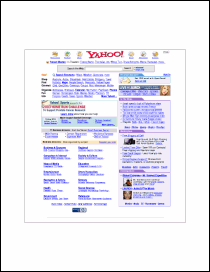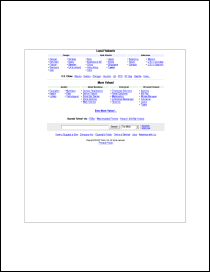 |
|
| |
|
|
|
 |
|
This example shows how to import an HTML page into a multi-page
PDF document.
|
|
| |
| |
|
We first create a Doc object and inset the edges a little so that
the HTML will appear in the middle of the page.
[C#]
Doc theDoc = new
Doc();
theDoc.Rect.Inset(72, 144);
theDoc.HtmlOptions.UseScript = false; // set to true if your layout is JavaScript dependent
[Visual Basic]
Dim theDoc As Doc =
New Doc()
theDoc.Rect.Inset(72, 144)
theDoc.HtmlOptions.UseScript = False ' set to true if your layout is JavaScript dependent
|
|
| |
| |
|
We add the first page of HTML. We save the returned ID as this
will be used to add subsequent pages.
[C#]
theDoc.Page =
theDoc.AddPage();
int theID;
theID =
theDoc.AddImageUrl("http://www.yahoo.com/");
[Visual Basic]
theDoc.Page =
theDoc.AddPage()
Dim theID As Integer
theID =
theDoc.AddImageUrl("http://www.yahoo.com/")
|
|
| |
| |
|
We now chain subsequent pages together. We stop when we reach a
page which wasn't truncated.
[C#]
while (true)
{
theDoc.FrameRect(); // add a black
border
if
(!theDoc.Chainable(theID))
break;
theDoc.Page
= theDoc.AddPage();
theID =
theDoc.AddImageToChain(theID);
}
[Visual Basic]
While
True
theDoc.FrameRect() ' add a black
border
If Not theDoc.Chainable(theID)
Then
Exit While
End
If
theDoc.Page =
theDoc.AddPage()
theID =
theDoc.AddImageToChain(theID)
End While
|
|
| |
| |
|
After adding the pages we can flatten them. We can't do this
until after the pages have been added because flattening will
invalidate our previous ID and break the chain.
[C#]
for (int i = 1; i <=
theDoc.PageCount; i++) {
theDoc.PageNumber =
i;
theDoc.Flatten();
}
[Visual Basic]
For i As Integer = 1 To
theDoc.PageCount
theDoc.PageNumber =
i
theDoc.Flatten()
Next
|
|
| |
| |
|
Finally we save.
[C#]
theDoc.Save(Server.MapPath("pagedhtml.pdf"));
theDoc.Clear();
[Visual
Basic]
theDoc.Save(Server.MapPath("pagedhtml.pdf"))
theDoc.Clear()
|
|
| |
| |
|
We get the following output.

pagedhtml.pdf [Page 1] |

pagedhtml.pdf [Page 2] |
|
|
| |

 Setup
Setup





 Setup
Setup



